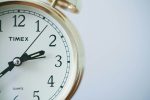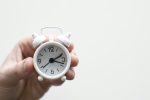Measuring Solids and Time Basic Science Primary 4 Second Term Lesson Notes Week 10
Basic Science Lesson Plan: Measuring Solids and Time
Subject: Basic Science
Class: Primary 4
Term: Second Term
Week: 10
Age: 9 years
Topic: Measurement
Sub-topic: Measuring Solids and Time
Duration: 1 hour
Behavioural Objectives
By the end of the lesson, pupils will be able to:
- Identify materials used for measuring solids and time.
- Describe metric units for measuring solids and time.
- Demonstrate how to measure solids and time accurately.
Keywords
Measurement, Solids, Time, Metric Units, Scale, Stopwatch, Volume, Mass
Set Induction
The teacher displays a weighing scale, a stopwatch, and a clock. Pupils discuss the use of these tools and predict how they help in measuring solids and time.
Entry Behaviour
Pupils are familiar with objects like clocks and can recognize solids around them.
Learning Resources and Materials
- Weighing scale
- Measuring cylinder
- Stopwatch
- Clock
- Solids (e.g., books, boxes, stones)
Building Background/Connection to Prior Knowledge
Pupils have learned about the states of matter (solid, liquid, gas) in previous lessons. This lesson will expand their knowledge by focusing on measuring solids and time.
Embedded Core Skills
- Critical thinking
- Observation
- Measurement and calculations
Reference Books
- Lagos State Scheme of Work for Basic Science (Primary 4)
- Basic Science Textbooks

Instructional Materials
- Weighing scale
- Metric rulers
- Measuring cylinder
- Stopwatch
Content
1. Meaning of Measurement
Measurement is the process of determining the size, weight, or quantity of something using standard units.
2. Measuring Solids
- Definition: Measuring solids means determining their size, weight, or volume.
- Materials Used:
- Weighing scale (for weight or mass).
- Ruler or measuring tape (for length, breadth, and height).
- Measuring cylinder (for irregular solids, using water displacement).
- Examples:
- Measuring the weight of a stone using a weighing scale.
- Measuring the height of a book with a ruler.
- Measuring the volume of a small rock using water displacement.
3. Measuring Time
- Definition: Measuring time means determining the duration of an event or activity.
- Materials Used:
- Stopwatch (for short durations).
- Clock (for hours and minutes).
- Examples:
- Timing a 100-meter race with a stopwatch.
- Using a clock to check how long it takes to complete homework.
- Measuring how long it takes for water to boil.
4. Metric Units for Measuring Solids and Time
- For Solids:
- Mass: grams (g), kilograms (kg).
- Length: centimeters (cm), meters (m).
- Volume: cubic centimeters (cm³), liters (L).
- For Time:
- Seconds (s), minutes (min), hours (h).
5. Practical Examples of Measuring Solids and Time
- Measuring the mass of a bag using a weighing scale.
- Checking the length of a pencil with a ruler.
- Timing a relay race with a stopwatch.
- Using a clock to measure cooking time.
- Measuring the volume of sand using a container and a measuring cylinder.
Evaluation (15 Fill-in-the-Blank Questions)
- The tool used to measure time is a ________.
a) Scale
b) Stopwatch
c) Ruler
d) Cylinder - The weight of an object is measured in ________.
a) Kilograms
b) Hours
c) Minutes
d) Meters - The length of a box is measured using a ________.
a) Stopwatch
b) Clock
c) Ruler
d) Scale - The standard unit for measuring time is ________.
a) Grams
b) Liters
c) Seconds
d) Cubic centimeters - A ________ measures the volume of an irregular solid.
a) Measuring cylinder
b) Stopwatch
c) Ruler
d) Scale - The mass of an object is measured with a ________.
a) Clock
b) Measuring tape
c) Scale
d) Timer - One hour has ________ minutes.
a) 30
b) 60
c) 90
d) 24 - The metric unit for length is ________.
a) Kilograms
b) Liters
c) Centimeters
d) Seconds - Water displacement is used to measure ________.
a) Weight
b) Volume
c) Time
d) Length - A stopwatch is used for measuring ________.
a) Mass
b) Length
c) Short durations of time
d) Volume
Class Activity Discussion (15 FAQs)
- Q: What is measurement?
A: Measurement is the process of finding the size, weight, or quantity of something. - Q: What tool is used to measure mass?
A: A weighing scale. - Q: What tool measures time?
A: A stopwatch or clock. - Q: Name two units of time.
A: Seconds and minutes. - Q: What unit is used to measure weight?
A: Grams or kilograms. - Q: How do you measure the volume of a solid?
A: Use water displacement or a measuring cylinder. - Q: How is the length of an object measured?
A: Using a ruler or measuring tape. - Q: What is the metric unit for length?
A: Centimeters or meters. - Q: What is the standard unit of time?
A: Seconds. - Q: How many seconds are in one minute?
A: 60 seconds. - Q: What tool measures the length of a table?
A: A ruler or measuring tape. - Q: What is the unit for liquid volume?
A: Liters. - Q: How is the volume of a small rock measured?
A: Using water displacement in a measuring cylinder. - Q: What tool measures short durations?
A: A stopwatch. - Q: Name one unit for measuring mass.
A: Kilograms.
Presentation
- Step 1: Review the previous topic on “States of Matter.”
- Step 2: Introduce measurement and explain how it applies to solids and time.
- Step 3: Demonstrate measuring solids using a scale and ruler, and time using a stopwatch.
Teacher’s Activities
- Explain the definitions and importance of measurement.
- Demonstrate how to use the weighing scale and stopwatch.
- Guide pupils in practical demonstrations.
Learners’ Activities
- Observe demonstrations.
- Measure objects using the tools provided.
- Ask and answer questions during the discussion.
Evaluation Questions (10 Short Answers)
- What is the process of measurement?
- Name two tools used for measuring solids.
- What unit is used to measure time?
- How is the volume of a rock measured?
- What is the metric unit for mass?
- How many seconds are in one minute?
- Name a tool for measuring the length of a box.
- What is the use of a stopwatch?
- What is the standard unit for measuring length?
- Why is measurement important?
Conclusion
The teacher reviews the definitions, tools, and methods for measuring solids and time. Pupils’ work is marked, and feedback is given.
SEO Details
Captivating Title: Measuring Solids and Time: Tools and Techniques
Focus Keyphrase: Measuring solids and time
SEO Title: Measuring Solids and Time – Tools, Units, and Methods Explained
Slug: measuring-solids-time
Meta Description: Learn how to measure solids and time using simple tools like scales and stopwatches. Explore practical examples, metric units, and FAQs for better understanding.
Related
Related posts:
- Shape Construction with Wood or Metal Basic Science Primary 4 Third Term Lesson Notes Week 2
- Soil Constituents Basic Science Primary 4 Second Term Lesson Notes Week 2
- Products of Technology Basic Science Primary 4 Second Term Lesson Notes Week 8
- SECOND TERM EXAMINATION PRIMARY 4 BASIC SCIENCE
- Basic Science Primary 4 Questions
Related Posts
THIRD TERM PROMOTIONAL EXAMINATION PRIMARY 4 CREATIVE ART
THIRD TERM PROMOTIONAL EXAMINATION PRIMARY 4 ENGLISH GRAMMAR
Measuring liquids Basic Science Primary 4 Second Term Lesson Notes Week 9
About The Author
Edu Delight Tutors
Am a dedicated educator with a passion for learning and a keen interest in technology. I believe that technology can revolutionize education and am committed to creating an online hub of knowledge, inspiration, and growth for both educators and students. Welcome to Edu Delight Tutors, where learning knows no boundaries.